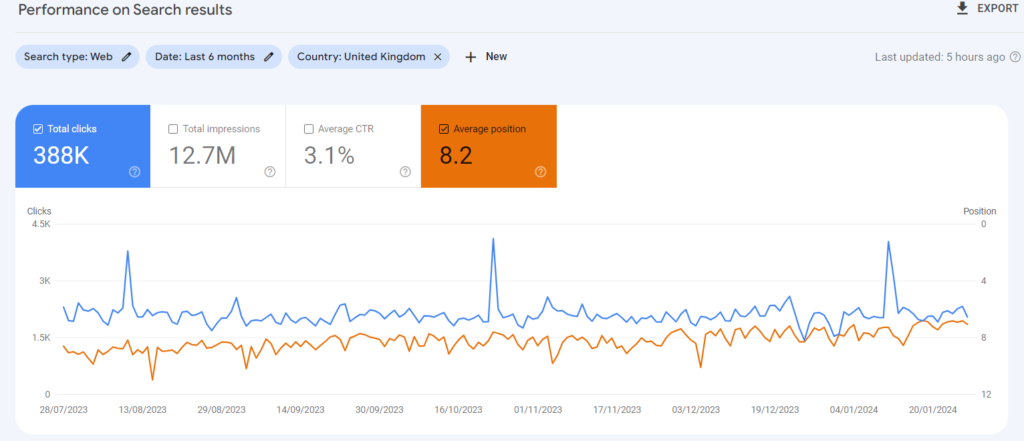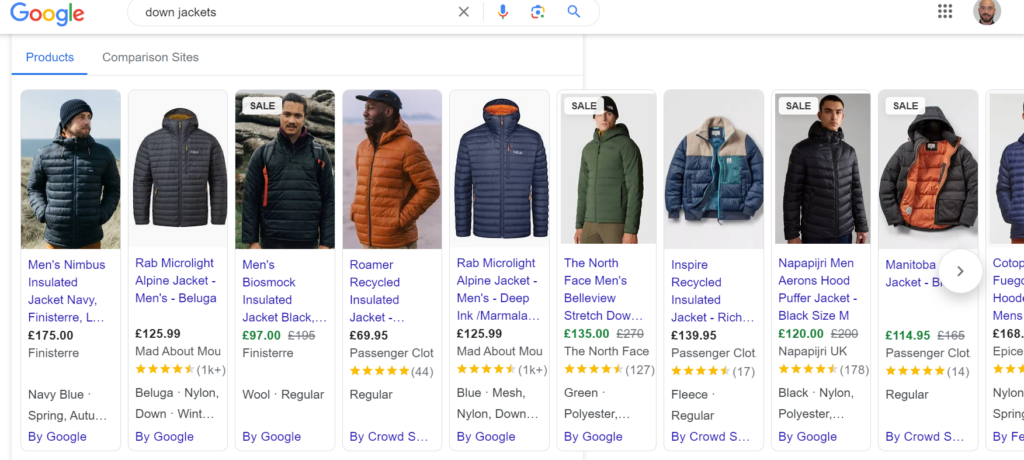Choosing the right digital marketing channel for your business

As a digital marketing consultant I’m often asked which digital marketing channel is right for a client’s business. Personally, I’m a fan of an omni channel marketing strategy. This means that I advise clients to make their business present on all channels. However it’s good to have an idea of which might be your core digital marketing channel that you rely on most for your business. In this article we’ll look at the pros and cons of each channel.
Search Engine Optimisation
SEO can be described as the dark art of Digital Marketing. It’s less of an exact science than other channels as you don’t always know what is achievable from an SEO strategy. However, if you can rank highly for keywords relevant to your business it can truly make incredible profits from little cost.

Pros
- Can produce an incredible return on investment
- Can generate revenue for very little cost
- Can be scalable (for the right business)
Cons
- Results are not always guaranteed
- Google algorithms updates can affect topline revenue if you are solely reliant on this channel
- Results can take months to have an effect on revenue
Suitable for
- Ecommerce businesses that sell products with decent search volume
- Businesses that sell services related certain topic which has high search volume (e.g. learning to drive)
Not suitable for
- Businesses with niche products with low search volume
- Businesses that need quick results
- Businesses that have a seasonal offering
Paid Search
Paid search involves bidding on particular search terms on Google or other search engines such as BING (part of the Microsoft network). This channel can drive traffic, leads & sales very quickly (in the matter of days) but it comes at a cost.
Pros
- Can drive relevant traffic to any website in a matter of days
- Can be switched on ads off when needed
- Can return a positive return on ad spend and therefore be scalable
- Data from paid search can help drive an SEO strategy
Cons
- Can be expensive for competitive keywords
- If used as the only marketing channel the cost will make a big dent in profits
Suitable for
- Businesses that want to grow quickly
- Businesses with decent marketing budgets
- Products with decent profit margins
Not suitable for
- Businesses with small budgets
- Businesses that sell products and services with low search volume
- Products with small profit margins
Google Shopping
Although this could fall under Paid Search, Google Shopping is a very different channel to traditional Paid Search. Google allows businesses to upload their whole product catalogue to Google Merchant Center and then advertise the products through Google Ads. This is an essential channel for most ecommerce businesses.

Pros
- Quickly get traffic to all your products. This can take a little longer than traditional paid search but can be up and running within a week
- Can return a positive return on ad spend and therefore be scalable
- Shoppers see a price (in Google Shopping) before clicking, so this can work well if you are either competitively priced or if you have a high price that might stop people clicking (as then you don’t get charged). This helps filter out irrelevant traffic before being charged for a click
Cons
- More complicated to set-up that traditional Paid Search
- Product feeds can require maintenance
- If used as the only marketing channel the cost can make a big dent in profits
Suitable for
- Most ecommerce businesses but especially those with a larger products catalogue
- Businesses with decent marketing budgets
- Those using Shopify & WooCommerce as these platform integrate well with Merchant Center
Not suitable for
- Businesses with no physical product
- Businesses that sell products with low search volume
Social Media Advertising
Advertising on social media is often the first port of call for start-up businesses. You can reach a vast number of people quickly and at a relatively low cost per click (compared to Google), but it is not always the best option for your business. Unlike Paid Search people aren’t necessarily looking for your product so it works well with cheaper products that are more of an impulsive purchase. It can also work well for brands that have a story to tell (through their content).
Pros
- Low cost per click
- Reach huge volumes of people quickly
- Can produce a positive return on ad spend
Cons
- Meta Business Suite can be slow and clunky to use
- Product catalogue can require maintenance
- Targeting options are not as well focused as Google
- The platform is not as secure as Google and account hacking is on the rise
Suitable for
- Most businesses to some extent
- Businesses with cheaper (impulse purchase) products with low search volume
- Brands that have a story to tell through their content (video and written)
- Brands with content that has potential to be shared across social media as this can lead to free advertising
Not suitable for
- Brands that are more serious in nature e.g. financial services
- Businesses that are looking for positive returns on ads spend from their advertising
YouTube Advertising
YouTube is a great place to reach new potential customers. Unlike other platforms YouTube demographics leans more towards older male audiences so this can work well for products with the same target audience. Obviously you will need video content and the standard of which needs to be high.

Pros
- Low cost per click
- Reach huge volumes of people quickly
- Great for brand exposure
Cons
- Needs investment in high quality video content which can be expensive
- Does not always lead to direct conversions
Suitable for
- Brands that have a story to tell through their video content
- Brands with content that has potential to be shared across social media as this can lead to free advertising
Not suitable for
- Brands with small advertising & content budgets
- Businesses that are looking for higher returns on ads spend from their advertising rather than brand growth
Obviously there are more digital marketing channels that I could explore but I have focused on the channels that I have successfully used to grow businesses again and again. Email, Remarketing & Conversion Rate Optimisation are also essential to make your strategy perform to its full potential. If you need support with your digital marketing strategy then please do not hesitate to get in touch.
Frequently Asked Questions
How can businesses effectively balance multiple digital marketing channels, especially when resources may be limited, to achieve an optimal return on investment?
Balancing multiple digital marketing channels effectively hinges on understanding the unique strengths and limitations of each platform in relation to the business’s goals and resources. It involves strategic allocation of budgets, time, and manpower across channels based on factors such as target audience behaviour, competition landscape, and seasonality. Prioritising channels that offer the best return on investment while also complementing each other’s strengths can help businesses achieve a holistic marketing approach.
Are there any specific strategies or best practices recommended for integrating different digital marketing channels, such as SEO, paid search, and social media advertising, to maximize their collective impact?
Integrating different digital marketing channels requires a cohesive strategy that leverages the strengths of each channel to amplify overall results. This might involve aligning messaging and branding across platforms, utilizing data insights from one channel to inform strategies in another, and creating cross-channel campaigns that engage customers at multiple touchpoints in their journey. By adopting an integrated approach, businesses can enhance brand consistency, improve audience targeting, and maximize the impact of their marketing efforts.
In terms of long-term sustainability and adaptability, how should businesses approach selecting and prioritising digital marketing channels amidst changing market trends and evolving consumer behaviours?
Selecting and prioritising digital marketing channels should be a dynamic process that takes into account changing market trends, consumer preferences, and technological advancements. It’s essential for businesses to regularly evaluate the performance of their chosen channels, experiment with new platforms or tactics, and adapt their strategies accordingly. By staying agile and proactive in monitoring industry shifts and consumer behaviour, businesses can future-proof their marketing efforts and maintain a competitive edge in the digital landscape.